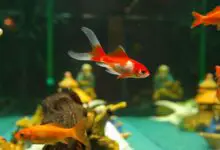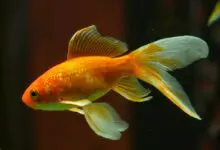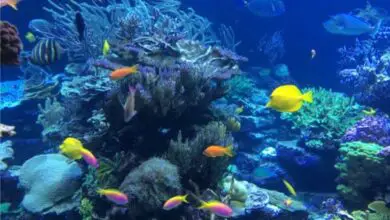Root Causes of Unexpected Fish Death

Nothing is more disheartening for an aquarist than finding your prized fish inexplicably floating at the top of the tank. While the cause may not be immediately obvious, there is usually an underlying issue that led to unexpected loss your fish. Carefully investigating water parameters, diseases, equipment issues, diet, aggression, and environmental factors can help you know the root cause.
In this blog post, we’ll walk through a systematic methodology for determining what factors resulted in an untimely fish death.
Establishing a Methodical Investigation Process
Responding quickly when discovering an unexplained fish death is key. Following a standardized protocol helps ensure no possibilities are overlooked during the search for answers. Here are the logical steps to take:
1. Physical Examination – First, carefully inspect the deceased fish for any outward signs of disease, parasite infection, or physical injury. Document your observations. Look for spots, lesions, torn fins, protruding scales, and any other irregularities.
2. Water Testing – Next, immediately test for any fluctuations in water parameters like ammonia, nitrite, nitrate, pH, temperature, and dissolved oxygen. Compare to the ideal levels for your particular species.
3. Tank Inspection – Thoroughly search the tank for any issues like sharp decorations, dying plants, uneaten food, or malfunctioning equipment. Make notes on any concerns.
4. Disease Diagnosis – Based on physical examination, research fish diseases that match symptoms. Compile list of likely culprits for further evaluation.
5. Diet Analysis – Review typical diet fed over recent weeks. Ensure nutritionally balanced and appropriate for species.
6. Aggression Evaluation – Observe behavior of other tankmates for signs of aggression or dominance issues. Isolate aggressive fish if found.
7. Corrective Measures – Implement any appropriate corrective actions, medication treatments, or tank maintenance based on likely causes uncovered during investigation.
This comprehensive process casts a wide net to surface all possible factors at play. Now let’s explore each area of the investigation more closely.
Recognizing the Signs of Common Fish Diseases
Careful physical examination of the deceased fish is an important early step. The external appearance often provides clues regarding the type of disease, parasite, or bacterial infection.
Some common aquarium fish diseases to look for include:
Ich (White Spot Disease) – Small white dots across body and fins. Fish often exhibits flashing (rubbing on objects). Caused by ciliate parasite.
Velvet – Yellowish or rust-colored dusty appearance. Result of parasitic dinoflagellates that attack skin and gills.
Fin Rot – Frayed fins with reddish edged or inflamed areas. Bacterial infection of fin tissue.
Dropsy – Swollen body with scales protruding outward. Kidney infection or fluid accumulation in tissues.
Columnaris – White/gray lesions around fins and mouth, often with cottony appearance. Bacterial infection.
Fish Fungus – Whitish clumps or growths on skin, fins, or gills. Opportunistic fungal infections.
Researching the descriptions and causes of common aquarium diseases helps narrow down suspects based on visual symptoms. However, many other factors could also be at play. Let’s look at water parameters next.
Testing Water Chemistry to Identify Parameter Issues
Even if no signs of disease are visually apparent, fluctuations in water chemistry can still cause fish deaths. Stress from poor water quality impacts long term health.
Test kits are essential for monitoring levels of:
- Ammonia – Highly toxic even in small amounts. Comes from fish waste and excess food.
- Nitrite – Also toxic. Intermediate product during nitrogen cycle.
- Nitrate – Less dangerous but still problematic at high concentrations. End product of nitrogen processing.
- pH – Impacts fish physiology and chemical toxicity. Sudden pH swings can shock fish.
- Temperature – Each species has preferred temperature range. Rapid changes raise stress.
- Dissolved Oxygen – Fish require sufficient oxygen to breath properly. Levels drop if poor surface agitation/aeration.
Compare your measured levels against recommended guidelines for your particular fish species. Address any parameters beyond ideal ranges through water changes, chemical filter media, or other corrective steps.
Even with perfect water chemistry, environmental stressors could still be at play. Let’s explore that next.
Assessing Environmental Stressors in the Aquarium
Fish can experience elevated stress levels from environmental issues in the tank unrelated to water quality. Take time observing their behaviors to detect problems.
Some common environmental stressors include:
- Aggressive Tankmates – Bullying, nipping, or intimidation from other fish. Usually stemming from territorial disputes or dominance hierarchies.
- Insufficient Hiding Spaces – Lack of plants, caves, driftwood etc. leaves shy fish feeling exposed and vulnerable.
- Noise or Vibrations – External rackets or equipment hum/vibrations startle easily frightened species like tetras.
- Too Much Activity – Hyperactive fish like danios tire out calmer species in community tanks if not given breaks.
- Improper Lighting – Excess light or lack of dark period disrupts circadian rhythms. Causes excess algal growth too.
Addressing environmental issues through tank redesign, aquascaping changes, or modifying stocking can alleviate ambient stress and prevent loss.
Now let’s shift focus to indicators of poor water quality issues.
Recognizing Warning Signs of Declining Water Conditions
Often times declining water quality happens slowly, with no single catastrophic event. But the cumulative effects on fish health are just as devastating.
Watch for these clues that suggest a negative trend in tank conditions:
- Increased algal growth or green water bloom. Indicates excess nutrients in water column.
- Rising nitrate levels. Changes needed to stocking density, feeding, plant growth, filtration capacity.
- Increased fish flashing/rubbing against objects. Irritation from toxins, parasites, or bacteria.
- Heavy buildup of detritus or mulm in tank. Slow decaying organic matter. Requires siphon vacuum.
- Cloudy, hazy water appearance. Caused by bacteria bloom or fine particulate accumulation.
- Strong odors from tank. Gasses released by rotting debris or old food. Needs immediate water change.
Stay vigilant for these red flags of declining water quality. Address any issues promptly before fish health suffers.
Now let’s examine the role diet and nutrition factor into fish health outcomes.
Analyzing Your Fish Diet and Feeding Habits
Diet and nutrition are directly linked to fish immune function and disease resistance. Feeding issues to evaluate include:
- Improperly Sized Food – Fish unable to swallow oversized pieces. Lead to decay and ammonia spike.
- Too Much Food – Excess uneaten food quickly fouls water as it decomposes. Feeding sparingly prevents this.
- Nutritional Deficiencies – Critical vitamins and nutrients missing from inferior foods. Leads to weakened immunity.
- Expired Food – Food past expiration date lacks vitamin potency and nutrients. Refrigeration prolongs shelf life.
- Infrequent Water Changes – Greater feeding requires more frequent water changes to remove waste buildup.
Review feeding amounts, food quality, expiration dates, and water change schedule. Adjust your process to provide a balanced, nutritious diet.
This covers the major areas to investigate when diagnosing an unknown fish death. Now let’s explore corrective actions to prevent repeat issues.
Implementing Changes to Prevent Future Loss
By systematically working through the layered causes of fish mortality, you can pinpoint the most likely contributing factors. Make the following adjustments based on your investigation findings:
- Treat or isolate fish with contagious illnesses and allow full recovery before returning to display tank.
- Adjust any water parameters beyond ideal ranges and monitor for improvement. Consider upgrading filtration system.
- Redesign tank layouts and aquascaping to reduce aggression and create calming hideaways if environmental stress detected.
- Increase water change frequency and siphon gravel to remove excess debris and dissolved organics if indicators of decline present.
- Switch to high quality foods with proper nutritional balance if evaluation reveals diet deficiencies.
- Repair or replace damaged equipment like heaters, pumps, and filters if functionality compromised.
- Assess tank size and current stocking levels if aggression or overcrowding likely factors.
Correcting these types of issues improves conditions for remaining fish and avoids repeats of unexplained loss. Most importantly, don’t allow solitary deaths to continue unaddressed or they may escalate to a full-scale tank crash.
Keys to Finding Answers for Fish Mortality
Losing aquarium fish suddenly and mysteriously is frustrating and disheartening. But nearly always some underlying cause can be uncovered through methodical inspection of conditions.
By following a standardized investigation process each time, you can get to the bottom of puzzling fish fatalities. Testing water, diagnosing disease, evaluating diet, observing behaviors, and making corrective changes brings closure while honoring lost fish through improved husbandry. Learning from errors better equips you to provide a healthy, prospering environment.
Stay vigilant for early red flags of stress and declining conditions. Address issues promptly before they escalate. Your careful attention both solves mysteries and prevents new ones from occurring in the first place. With a rigorous, systematic approach, your tank will be smoothly sailing.







